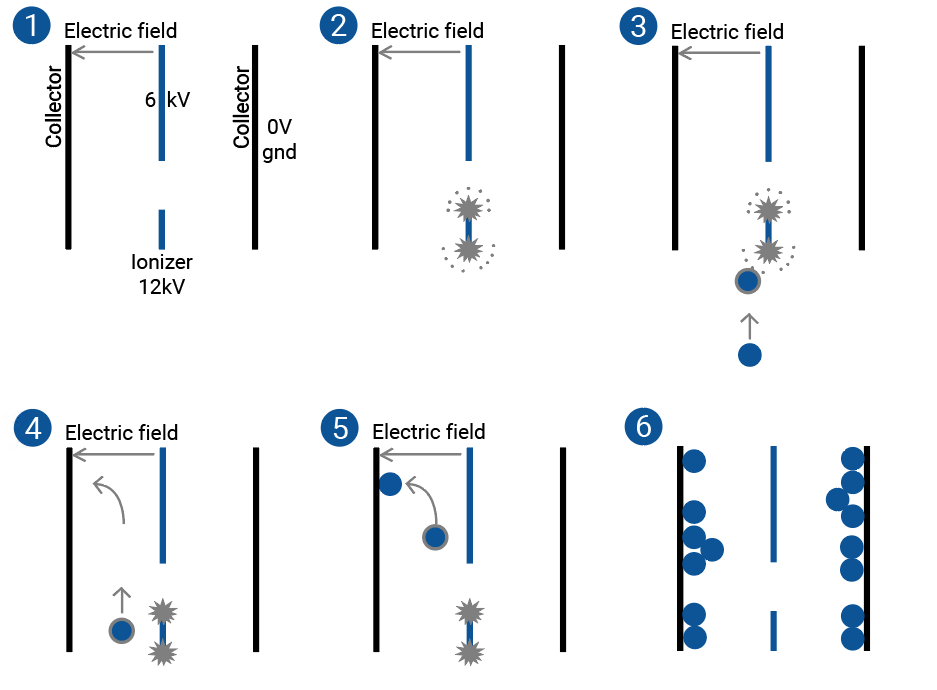Ionizer (ionization electrode)
Ionizer (ionization electrode)
An ionizer, also called ionization electrode or ionizing electrode, is an essential component of an electrostatic precipitator. An ionizer generates artificial ions inside a strong electric field in a gas stream, e.g. process exhaust air or raw gas, using energetic energy. An ion is an electrically charged molecule or atom with at least one positively charged nucleus. If impurities like particles enter this electric field, they take up ions and become electrically charged.
Inside the electrostatic precipitator, the ionizing electrode is positioned at regular intervals between the collector plates. If the ionizer generates an electric field, there is a charge difference to the collector plates which have a charge of 0V. This difference in charge causes the electrically charged particles and liquid droplets to be driven to the collector plates. Solid residues accumulate at the plates while liquid residues flow downwards into an external tank. Electrostatic precipitator modules by KMA Umwelttechnik use primarily wire ionizers and profile ionizers.
In wire ionizers, the ionizing body consists of a tungsten wire. The tungsten wires are clamped at the position of the ionizer between the respective collector plates. The wire is put under voltage using electric energy. This releases ions and creates an electric field. The exhaust air is afterwards purified according to the principle of electrostatic charging described above. The permanent tension of the wire results in a constant material removal. This high level of material removal increases the maintenance of such filtration modules.
Profile ionizers are an alternative to wire ionizers. A profile ionizer is a solid flat component made out of metal, usually stainless steel, equipped with ionizer tips over its entire circumference. Using energetic energy, the ionizer produces ions at the ionizer tips. The profile ionizer separates particles and other impurities through the principle of electrostatic charging as described above. A profile ionizer impresses by its robust design with low material removal, low maintenance and extraordinary durability.
Therefore, KMA Umwelttechnik uses profile ionizers for its high-performance exhaust air filtration systems. The electrostatic precipitator cells are characterized by their very robust construction: Frames, electrodes and support rods made out of stainless steel, collectors either in aluminium or stainless steel, insulators in an oil-resistant ceramic design and a filter design optimized for the separation of liquid and viscous substances make the electrostatic precipitator an extremely economical and durable filter medium for numerous applications. To purify an exhaust air volume of 5,000 m3/h an electrostatic precipitator cell requires the approximate energy consumption of a 100 W light bulb.
To prevent dust emissions from accumulating on the collector plates and to ensure the high separation efficiency of the electrostatic precipitator, the precipitator needs to be cleaned in regular intervals. This is done through an automatic filter cleaning system (CIP).

Related links







